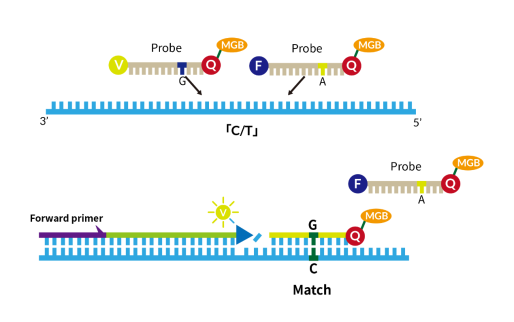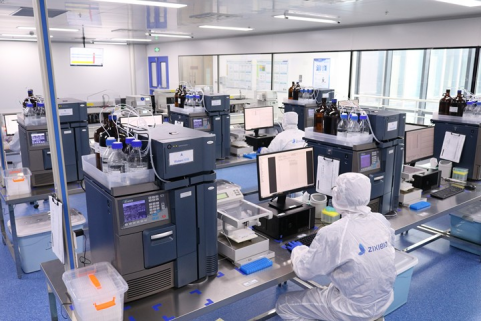
Inspection and quarantine are crucial measures to control the spread of plant and animal viruses and reduce the risk of human infection. With the ongoing changes in modern animal and plant breeding and cultivation methods, the threat of viral invasion has intensified. As a result, plant and animal quarantine has become an indispensable process to ensure ecological safety and public health.
Most countries have clear laws and regulations regarding plant and animal inspection and quarantine, and with continuous advancements in science and technology, new technical methods have emerged, such as molecular biological testing technologies and non-destructive testing technologies. These advanced technologies have significantly enhanced the efficiency and accuracy of plant and animal quality inspections.
As one of the key tools in inspection and quarantine, the application of MGB probes has greatly improved the convenience and accuracy of the inspection process. It has not only increased quarantine efficiency but also provided strong technical support for the prevention and control of plant and animal diseases.
The History of Inspection and Quarantine
The history of inspection and quarantine spans centuries, evolving alongside the growing understanding of infectious diseases and their transmission. The origins of quarantine can be traced back to the 14th century, when the first known large-scale epidemic of the bubonic plague swept through Europe and Asia. In 1347, during the height of the plague, the city of Venice, one of the busiest ports in Europe, began enforcing quarantine measures. Ships suspected of carrying the disease were isolated for a period of 40 days, a practice that would later give rise to the term "quarantine" from the Italian word "quaranta," meaning forty.
This early quarantine effort laid the foundation for more formalized health measures. By 1374, the Republic of Venice passed a law requiring ships to undergo inspection and isolation to prevent the spread of diseases. This legislation was one of the earliest recorded instances of a government enforcing public health regulations, and it quickly spread to other parts of Europe. Over the centuries, these practices evolved, and by the 17th and 18th centuries, quarantine stations were established along major trade routes, and protocols became more standardized.
The development of quarantine practices advanced significantly in the 19th century with the rise of modern medicine and epidemiology. The advent of germ theory in the mid-1800s, particularly through the work of scientists like Louis Pasteur and Robert Koch, provided a scientific basis for the understanding of disease transmission. As global travel and trade increased, so did the need for international cooperation in disease prevention.
In 1851, the first International Sanitary Conference was held in Paris, where representatives from various nations gathered to establish common regulations for controlling the spread of diseases across borders. This marked the beginning of global efforts to standardize quarantine measures. The creation of the World Health Organization (WHO) in 1948 further solidified international collaboration in health-related matters. The WHO's International Health Regulations (IHR) became a guiding framework for quarantine and inspection policies worldwide, ensuring that countries adhered to agreed-upon standards for managing health risks.
Over the years, as new diseases emerged and global trade expanded, quarantine practices continued to evolve. In the 20th and 21st centuries, technological advances, such as the development of rapid diagnostic tests and molecular biology techniques, have greatly enhanced the efficiency and effectiveness of inspection and quarantine systems. Today, inspection and quarantine play a crucial role in safeguarding public health, not only for human diseases but also in the control of plant and animal pests, ensuring the safety of ecosystems and food supplies.
Application of Molecular Biology Technologies in Inspection and Quarantine
Rapid and effective pathogen detection plays a crucial role in the prevention and treatment of animal diseases. In recent years, new molecular diagnostic methods based on PCR amplification technology, compared to traditional molecular diagnostic techniques, offer higher detection speed, specificity, sensitivity, and accuracy. These methods are gradually developing towards automation, high throughput, and field applications. The increasingly mature new molecular diagnostic technologies have shown broad prospects for application in fields such as animal disease detection and identification, entry-exit inspection and quarantine, and more. Additionally, these technologies can be used for large-scale epidemiological surveys and analyses, providing a solid foundation for the scientific prevention and control of animal diseases.
Among these, MGB probes serve as an efficient, sensitive, and specific molecular tool in quarantine identification, particularly in pathogen detection, infectious disease control, and plant and animal quarantine fields.

Tsingke - MGB Probes
Zixi Biotech, a wholly owned subsidiary of Tsingke, focuses on the synthesis of modified probes. It has accumulated extensive experience in the research and development of MGB probes and supports their use in combination with LNA modifications to further enhance the binding strength and specificity of nucleic acid probes to their target sequences, aiding in quarantine and inspection research.
· Process A: MGB probes adapted for FAM, HEX, and VIC, with a synthesis cycle of approximately 3 working days;
· Process B: MGB probes adapted for CY5, ROX, TXR, CY3, JOE, Alexa 546, and 5' Ferrocene, with a synthesis cycle of approximately 4–5 working days;
· Process A1/B1: MGB probes with additional LNA modification on top of the base MGB probe, or using the A2/B2 process without LNA modification. The synthesis cycle is extended by an additional 1 working day when LNA modification is included.
For more information on our MGB probes and to explore how they can enhance your research, contact us today!
